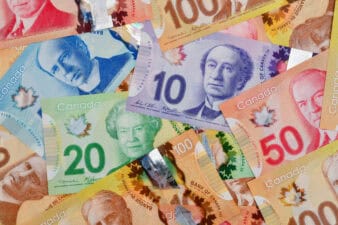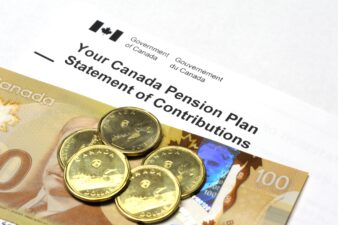The Canada Emergency Relief Benefit (CERB) was a blessing for Canadians who lost income due to the pandemic. After two extensions to the program, CERB finally ended on September 27, 2020. As much as Canadians wanted another extension, the Canada Revenue Agency (CRA) has no plans to increase the eligibility period of the CERB.
However, the CRA has introduced alternative programs to continue helping Canadians affected by the pandemic. I will discuss the CERB alternative and how you can create your own passive income with a stock like Royal Bank of Canada (TSX:RY)(NYSE:RY) in your investment portfolio.
Canada Recovery Benefit
The new Canada Recovery Benefit (CRB) has effectively replaced CERB as part of the government’s COVID-19 response plan. The CRA introduced the replacement program, which is similar in many ways to the CERB. The CRB eligibility period will last for a year, and people can collect CRB money for any of the 26 weeks from the 52-week eligibility period.
The CRB differs from CERB in how the CRA taxes it. In the case of CERB, the CRA will collect income taxes on the funds when Canadians file their taxes next year. The CRB is also a taxable payment but arguably could be better than CERB. However, the CRA is paying out the CRB after deducting the 10% tax from the amount, so Canadians don’t have to worry about accounting for it as part of their taxable income for the next tax season.
How much does it pay?
Another similarity that CRB shares with the CERB is the payout amount. The CRB pays eligible Canadians $500 per week. The difference is that it will be paid in two-week periods instead of four-week periods like the CERB. The CRA will pay CRB applicants $900 for two weeks after deducting the 10% tax.
If a Canadian is eligible for all 26 weeks of the CRB, they can collect up to $13,000 from the government relief program. Each two-week period requires a new application. With all the withholding tax deducted from the amount, the actual cash payments can be up to $11,700.
The CRB program will run from September 27, 2020, to September 25, 2021. You can collect the CRB payments for any 26 weeks during the eligibility period.
How to qualify for it
The CRA designed CRB to help Canadians who lost income due to the pandemic and are not covered under the new and improved Employment Insurance (EI) program. The idea is to assist the self-employed workers and those who had employment income that does not qualify for EI benefits. It means gig economy workers and contract workers can also receive the funds.
Applicants must be at least 15 years of age and have a valid Social Insurance Number. They must have earned at least $5,000 in 2019, 2020, or in the 12 months before they applied for CRB. Additionally, CRB does not disqualify applicants who earned more than $1,000. Another condition to qualify for CRB is that your loss of income must have been 50% or greater due to the pandemic.
Creating your own passive income
The CERB and now the CRB can help you cover expenses for the current financial crisis. However, it would be best to create your own passive income stream to protect yourself from loss of income in the future. An ideal way to achieve this is by using your Tax-Free Savings Account (TFSA) to hold a portfolio of reliable dividend-paying stocks like Royal Bank of Canada.
Allocating some of the contribution room in your TFSA to a stock like RBC can help you generate substantial income through its dividend payouts. RBC is a staple part of Canadian investment portfolios for its track record of providing its investors with reliable and consistent long-term returns.
The financial institution is the most significant Canadian bank in terms of market capitalization. A hallmark for reliable and growing dividends on the TSX, the stock began paying dividends in 1870 and has not missed a payment since then. The bank has also increased its payouts for most of the time.
Foolish takeaway
Creating your own passive income can help you decrease relying on the government for financial aid. At writing, RY pays its shareholders a juicy 4.45% dividend yield. Trading for $97.07 per share, it could become a vital foundation for a dividend-income portfolio in your TFSA.







